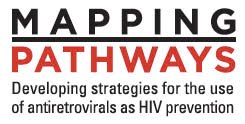via The New York Times, by Donald G. McNeil Jr.
 The failure of a daily pill to protect healthy African women against AIDS may not have been the pill’s fault but the women’s reluctance to take it, scientists at an important AIDS conference in Seattle were told this week.
The failure of a daily pill to protect healthy African women against AIDS may not have been the pill’s fault but the women’s reluctance to take it, scientists at an important AIDS conference in Seattle were told this week.
Last April, a promising trial of “pre-exposure prophylaxis” — giving small protective doses of antiretroviral drugs to uninfected people — was stopped early because women were getting infected anyway. It was a discouraging setback.
But scientists at this week’s Conference on Retroviruses and Opportunistic Infections who analyzed blood samples taken from the women reported that only a quarter of those who got infected had any of the drug, Truvada, in their blood. That suggested they had not taken their pills.
Papers presented at the four-day conference offered findings both optimistic and scary. There were hints at a possible way to flush the virus out of its hiding places in cells, and at ways to let some patients safely take “vacations” from triple therapy.
It is not known why so few African women took their Truvada, but there is still an enormous stigma about AIDS in Africa, and a bottle of AIDS drugs in the home implies that someone there is sick, said Mitchell Warren, executive director of AVAC, a prevention advocacy group. Mr. Warren pointed out that Truvada had protected women in a different study that enrolled established couples in which only one partner was infected.
In a different study, researchers from the University of North Carolina at Chapel Hill showed that they had used a cancer drug, vorinostat, to purge the virus hiding in the CD4 cells of six men who were already doing well on triple-therapy cocktails.
Although the cocktails can make the virus vanish from the blood, it hides in different types of cells, ready to roar back if the patient stops taking the cocktails.
Rooting some out with vorinostat “may not be the magic bullet,” said Dr. David Margolis, the study’s lead researcher, “but it suggests we can build a path that may lead to a cure.”
Another small trial, at the Wistar Institute in Philadelphia, gave patients synthetic interferon — a virus-blocker normally made by the human body — while they took “holidays” of up to six months from triple therapy. Nine of the 20 patients did not see their viruses rebound to dangerous levels. That result will not change clinical practice right away, said Dr. Luis J. Montaner, who led the study, but suggested an alternative to lifelong triple therapy, which can be debilitating.
Read the Rest.
[Content that is linked from other sources is for informational purposes and should not construe a Mapping Pathways position.]
Last April, a promising trial of “pre-exposure prophylaxis” — giving small protective doses of antiretroviral drugs to uninfected people — was stopped early because women were getting infected anyway. It was a discouraging setback.
But scientists at this week’s Conference on Retroviruses and Opportunistic Infections who analyzed blood samples taken from the women reported that only a quarter of those who got infected had any of the drug, Truvada, in their blood. That suggested they had not taken their pills.
Papers presented at the four-day conference offered findings both optimistic and scary. There were hints at a possible way to flush the virus out of its hiding places in cells, and at ways to let some patients safely take “vacations” from triple therapy.
It is not known why so few African women took their Truvada, but there is still an enormous stigma about AIDS in Africa, and a bottle of AIDS drugs in the home implies that someone there is sick, said Mitchell Warren, executive director of AVAC, a prevention advocacy group. Mr. Warren pointed out that Truvada had protected women in a different study that enrolled established couples in which only one partner was infected.
In a different study, researchers from the University of North Carolina at Chapel Hill showed that they had used a cancer drug, vorinostat, to purge the virus hiding in the CD4 cells of six men who were already doing well on triple-therapy cocktails.
Although the cocktails can make the virus vanish from the blood, it hides in different types of cells, ready to roar back if the patient stops taking the cocktails.
Rooting some out with vorinostat “may not be the magic bullet,” said Dr. David Margolis, the study’s lead researcher, “but it suggests we can build a path that may lead to a cure.”
Another small trial, at the Wistar Institute in Philadelphia, gave patients synthetic interferon — a virus-blocker normally made by the human body — while they took “holidays” of up to six months from triple therapy. Nine of the 20 patients did not see their viruses rebound to dangerous levels. That result will not change clinical practice right away, said Dr. Luis J. Montaner, who led the study, but suggested an alternative to lifelong triple therapy, which can be debilitating.
Read the Rest.
[Content that is linked from other sources is for informational purposes and should not construe a Mapping Pathways position.]

No comments:
Post a Comment